
Katana Kami: A Way of the Samurai Story PC Review
Katana Kami: A Way of the Samurai Story‘s subtitle might sound close to another video game title, well that is because there is history behind this game as to why. The developers, Acquire, are the same people behind the Way of the Samurai series that last had an entry with Way of the Samurai 4 back in 2012 on PS3 and 2015 on PC. Those at the studio were initially working on a small downloadable game and a fifth entry for Way of the Samurai, but the latter never came to fruition, and so development became more focused on the download only project to flesh it out into a full release. I guess fans of Way of the Samurai will be wanting to know exactly what this game is?
I can get straight to the point and tell you that this is looked upon as a spin-off to Way of the Samurai, so do not expect the game to be offering something as unique as that series has been able to delivery. Katana Kami is a roguelike, isometric dungeon crawler with action RPG elements and randomised dungeons, something you by now have heard of with the popularity of the roguelike genre. The game does try to bring in some elements from the mainline series to give itself a bit of identity in the crowded genre, but this is still a roguelike, so people familiar with the genre will find that this game fits right in with its gameplay loop.
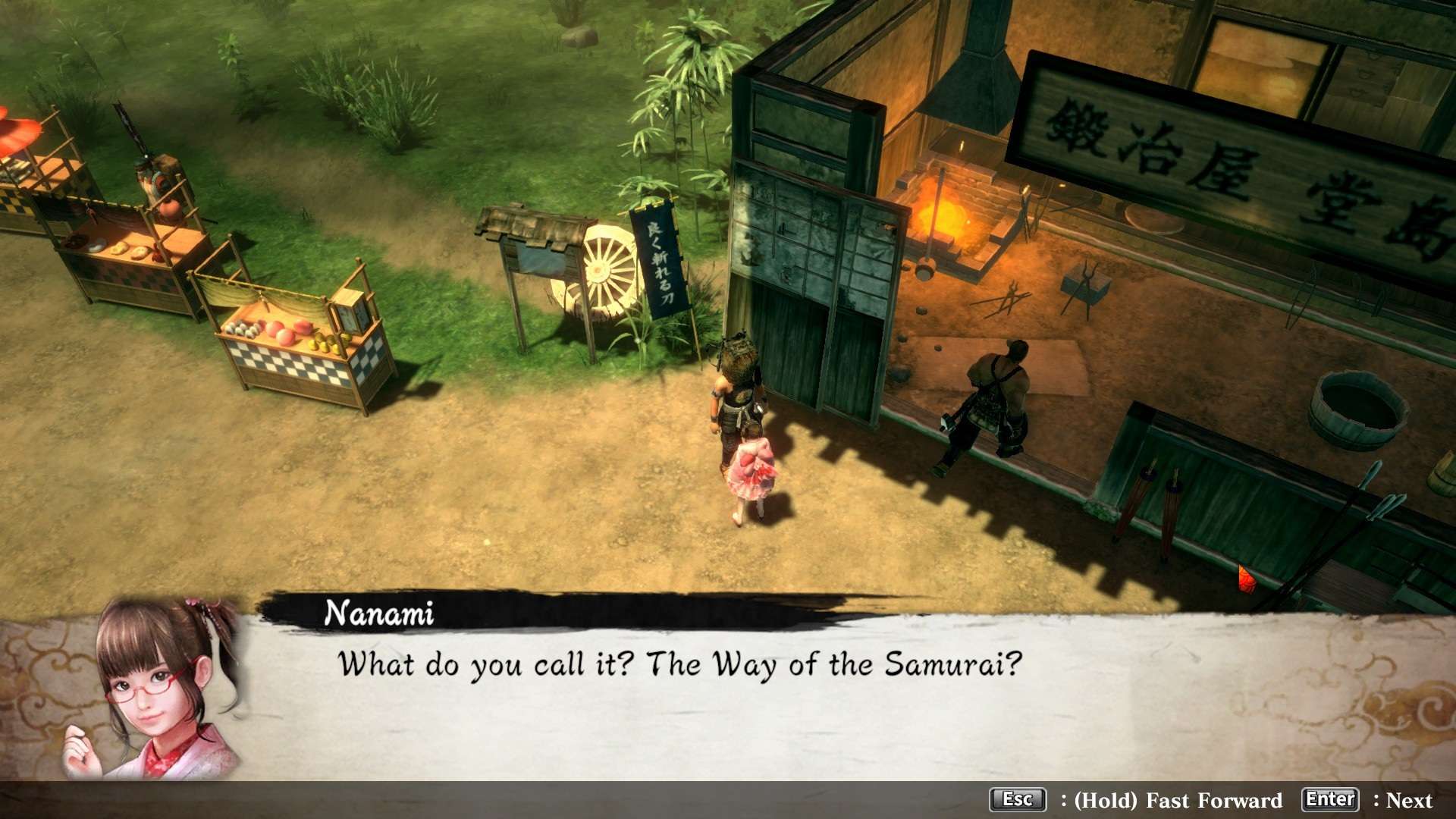
The backdrop for the story is rather brief, but sets the reason for the player to be taking part in all the dungeon exploring. Taking on the role of a ronin (a wondering samurai with no master), who is exploring Rokkatsu Pass and comes across a swordsmith going by the name of Dojima who currently is in trouble with debt to a local faction. Dojima has had his daughter taken against her will as insurance until he pays back what he owes. Dojima has no chance of paying back all the money in time, so with the ronin’s help and Dojima offering his swordsmithing skills and a bed to sleep in, maybe he might have a chance to pay off the loan and get back his loved one thanks to you.
Katana Kami quickly gets the ball rolling with its gameplay loop, as the game is clearly split into two segments. The first night introduces a strange glowing area in a tree in the middle of Rokkatsu Pass. This phenomenon turns out to be an entrance to Ipponmatsu Cave, a place where evil beings live across its many randomised floors, but also a source of materials, experience and money, which is exactly what the ronin needs right now. Leaving brings back the daylight, which during this time, the swordsmith can offer his skills, shops will sell goods and various non-playable characters walk around the area to give a little bit of world building from time to time. Going to bed during the day will skip time to the night, where again the glowing portal opens up ready for the ronin to go through and spend another evening fighting and looting.
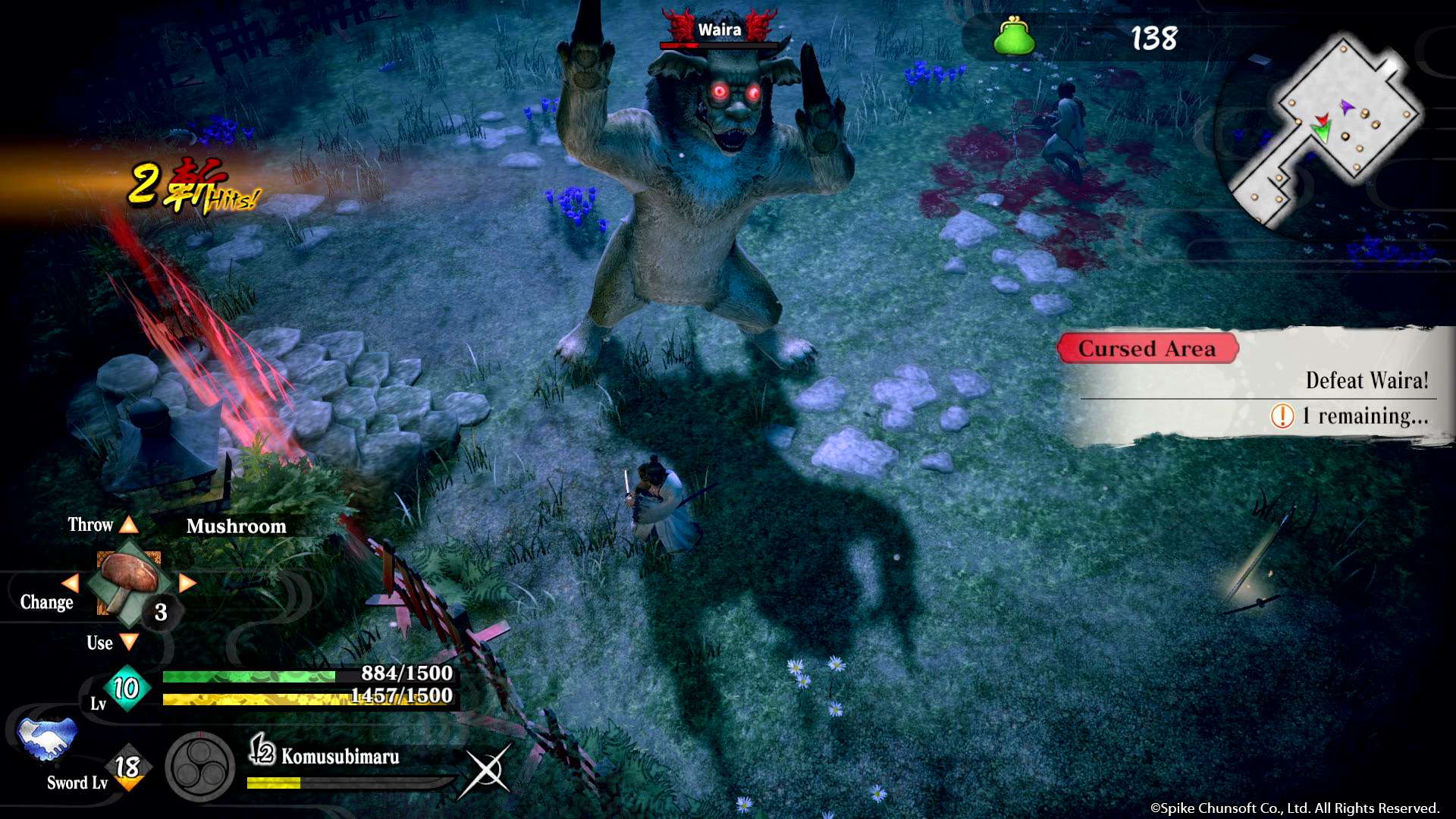
Most time is spent at night fighting the demons that overcrowd the dungeon floors, and so making use of any gear found is vital to staying alive. Initially, the ronin starts with a sword, and from here the combat system is introduced that shows how to unsheathe the sword and make use of light and heavy attacks, dodging and blocking. Sheathing weapons not only allows for faster movement, but is actually an important skill, since two key metres, Health and Vitality, are part of the mechanic and should be managed well. When weapons are sheathed, the vitality metre will drain after a few seconds to replenish missing health, stopping once health has reached maximum. Vitality is also used for actions, such as attacking, making it a mixture of health restoration and a stamina bar. It should be self-explanatory that if health reaches zero, then you die, but also if vitality hits zero for too long, then a God of Death will visit the floor of the dungeon you are on to come kill you. Various items found as loot or bought from the shops can replenish either health or vitality, meaning plenty of ways to keep those metres stocked.
A lot of enemies will succumb to players mashing the attack buttons, hacking the way through them, but this style of play will certainly involve being damage. To help stop this from happening using some of the advance mechanics available is ideal, such as breaking through enemies that like to defend, using a kick to push them away or grab and throw them. Blocking at the right time also offers a parry counter attack to deal big damage on enemies, otherwise holding block will do the default block, while dodging a split second before an attack lands also offers a counter attack for big damage. Defeated enemies not only drop loot and give experience, but they also drop orbs that fill up the rim around a triple yin yang symbol, with each full circle filling a part of the symbol. Press two buttons together activates Katana Time, an ability that adds an element casting based on the weapon in hand (such as electric bolts from the sky) if activated when all three symbols are filled out, while at other times it also buffs speed and damage, making the sword immune to breaking at the cost of draining the triple yin yang. Katana Time is a life saver when overwhelmed with enemies.

Combat is speedy and not complex, due to enemies acting rather one noted in their attacks. Once you have seen an enemy, you know how it behaves unless it manages to get the jump on the protagonist when focusing on other enemies, since the screen can become swamped with foes. It does not help that the lock-on mechanic is basic, as it can be rather fiddly to get it on the right enemy, plus it slows down the player, making the dodge more important to escape incoming attacks during a locked-on foe. I understand that maybe the limited enemy move set would help for getting further in runs, since on the return people will know how to defeat enemies already encountered, but only their random placement in the randomly create dungeon layouts becomes the surprise after their first appearance is revealed, making the earlier levels become stale the more repeats players go through.
To add some flavour to the combat there is a combo metre that increases the experience and item drop rate based on how high the player can keep the combo going. The game also offers nine fighting stances. The stances change the movement of light and heavy attacks, but since they are part of a weapon’s property, the stance cannot be switched without changing to a weapon that features a different stance. Up to three weapons can be equipped at a time and switched by pressing the left/right direction on the d-pad while holding down a button. Weapons are common as muck, as each enemy often drops their weapon to be picked up and store in the inventory. Implements of war are mostly Japanese swords or blades, with bows also available for some range damage, although, I never liked the use of them, preferring the close up encounters and the speed of short swords. Along with the stance properties, weapons also have their own quality level, abilities, speed, swing arc and endurance.
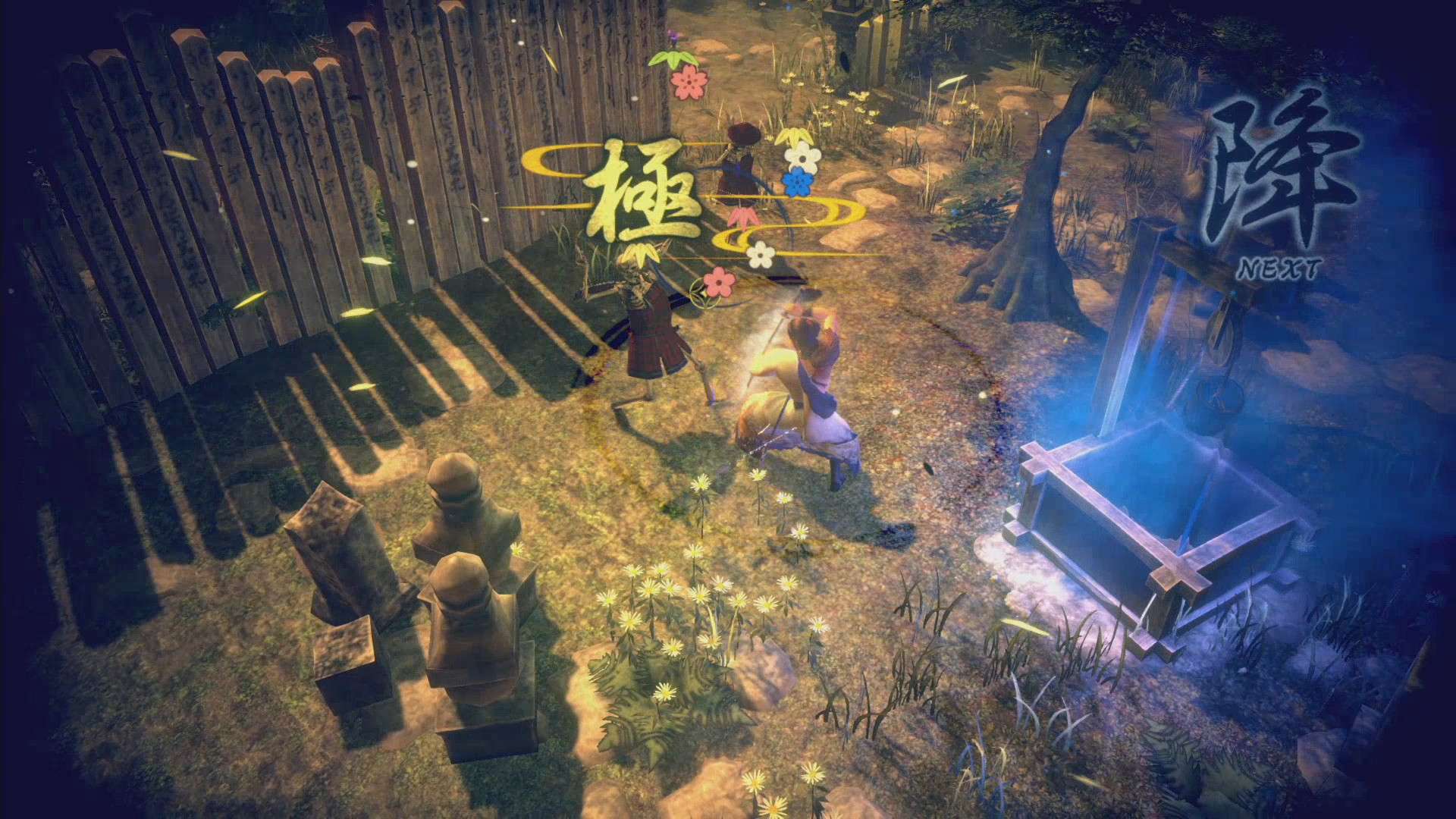
Players can carry a decent amount of loot, but it will eventually fill up after a few floors, because unless you are reserve with the quality of weapons found, even the most rubbish of weapons have their use. This is down to the weapon endurance and how the more it is used, the more worn it becomes, eventually breaking if it reaches zero endurance. To counter this, weapons in the inventory can be used as materials to repair the endurance by a limited amount at the blacksmith or special repair areas in the dungeon, and there are even reasons for using the same weapon type, as these add bonuses to repairs. Reusing the same weapon not only makes it lose endurance, but weapons gain their own experience and levels, unlocking new moves sets as they level up, but since this is tied to the specific weapon, it is best to keep it as long as possible by repairing or restoring it if it manages to break before it is fixed, but sadly, on death, any items on the character are lost forever.
This leads into the roguelike elements of the game and death, plenty of death if players do not keep their eye on things. There is always a risk vs reward with these types of games, and with Katana Kami it is about how far dare you go into the dungeon. Do you keep pushing to claim those better quality weapons, extra cash and level up gear or get out now while you still can. The answer is not always clear, since exit portals seem to be appear random on the floors, so sometimes it could be three or four floors before you are given the option. If you do brave it and die, your character loses everything in their inventory, which means all those levelled up gear, items and cash – remember, you need to meet the debt deadline or face a reset of doing it again to a new deadline – are gone, so the game offers the chance to store items in a safe in the swordsmith’s room before heading down into the dungeon. I should add that there is a way to get the gear back, in a somewhat Dark Souls like way, except you need to fight and defeat a copy of yourself to gain all the gear back. One thing different between this and some other roguelike is that leaving the dungeon resets the character back to level one. Items keep their levels, so runs become more about taking higher level gear rather than buffing the character due to this behaviour.
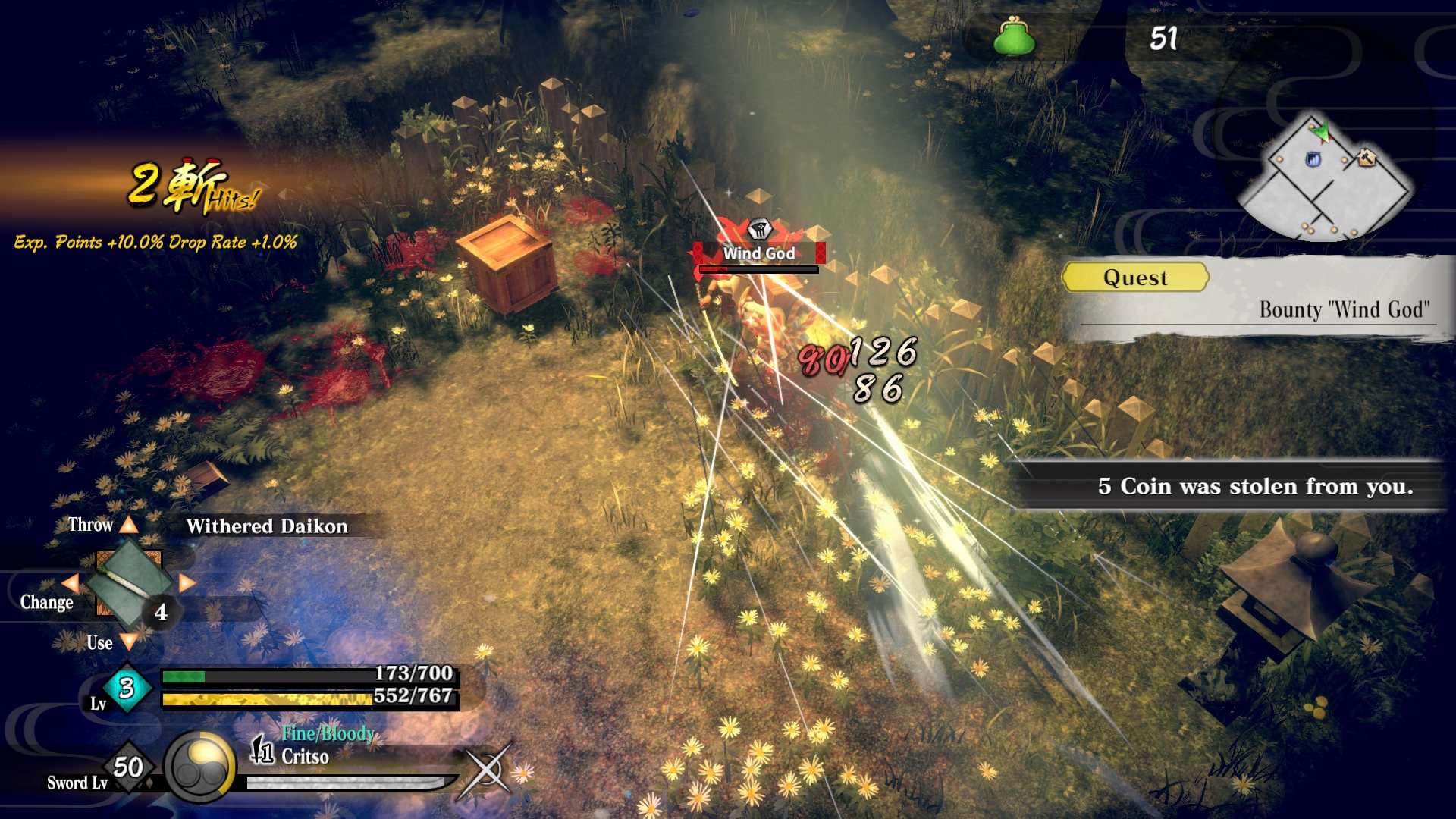
There are other features intertwine into the daytime setting to give that part of the game a bit more to it. Ruling around Rokkatsu Pass are three factions – Kurofu, Akadama and Post Town – who are squabbling with each other constantly. A daily newspaper informs what is going on between these three factions, showing their tensions and military might, which can be changed by how you fulfil each factions requests for weapons collected from the dungeon and who the swordsmith sells his weapons to, eventually having a faction favour the swordsmith to buy all their gear, raking in cash due to the upcoming war and helping that faction have more grip against the other two. This even spirals out of control outside your temporary home, as different faction shops pitch up to sell you goods, but can often end up fighting each other if their factions are at war, leaving you to stand in entertainment as you see them settle their differences with blades. Overall, the faction feature does not change the game’s story, it’s more a fun inclusion.
One of the weaker aspects is sadly the game’s presentation, starting with the options available on PC. I use a 1440p monitor, but the game does not support this resolution, rather it only goes up to 1080p or 2160p if you have a 4K device. This means the game looks blurry at full screen, so I played most of my time in window mode at 1080p to get sharper visuals. In 2020, this is an unacceptable missing resolution. Sure, the title is small, and that makes sense for all the missing advance graphical settings, but resolution is a staple that should be there no matter what game is released on PC. Running the game does not require anything demanding, which is down to the game looking rather basic, but for the type of game it is, the visuals are fine and the animations do the job well to get across the essence of the combat, even if coming across a bit stiff.
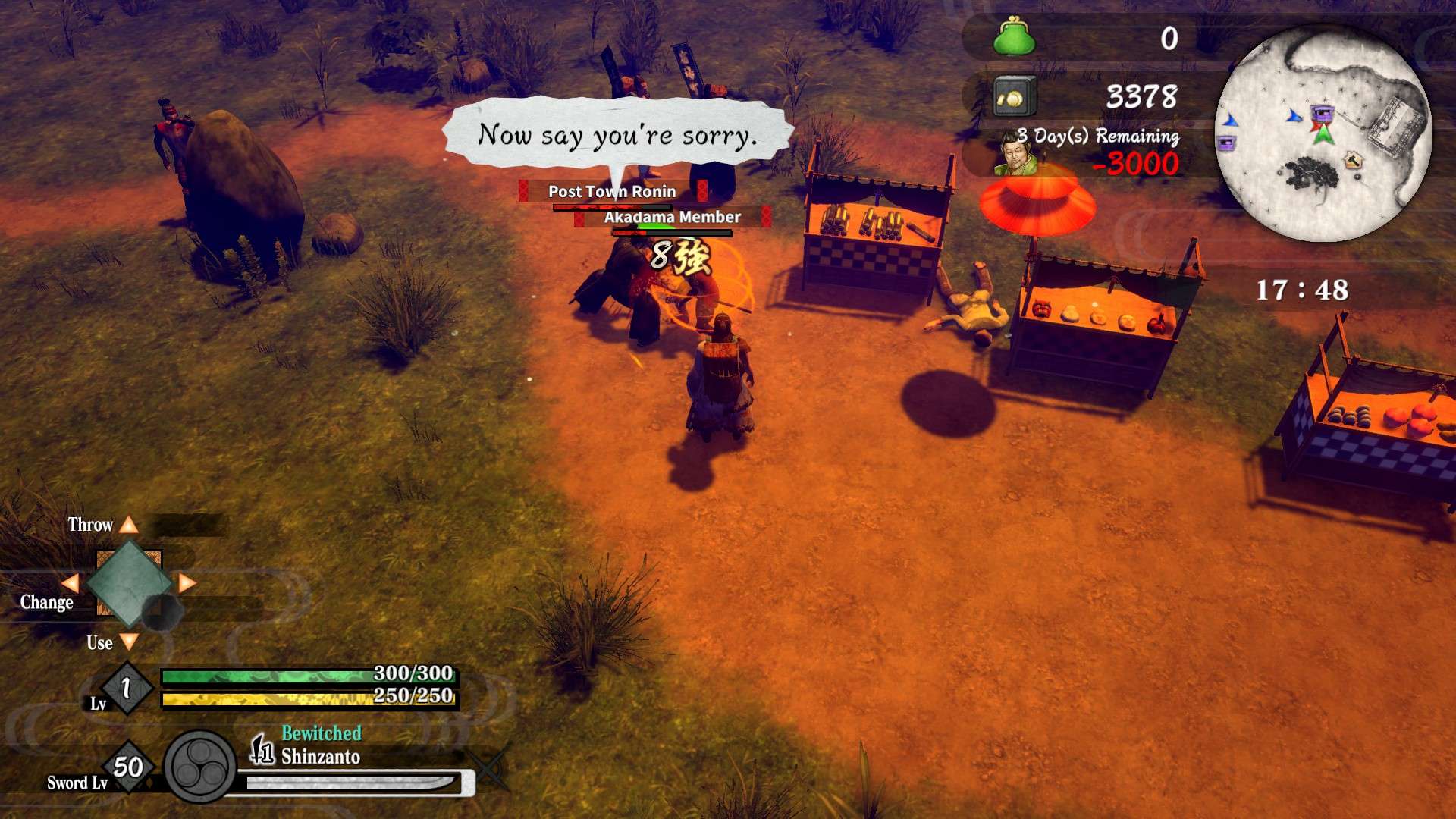
In other areas, the game’s user interface is lacklustre. These are rather barebones and counter intuitive to get around, and since quite a bit of time is spent in the menus for inventory, I do wish I was able to get around faster and select multiple items to speed it all up. Another area is the camera, where due to the locked isometric view, it can sometimes obscure things, at points wishing I could slightly tilt or spin the camera to see what’s behind a building. I would just randomly attack to see if any items were behind obscured viewpoints, most often there was something that would drop. The game tries to help by highlighting enemies behind objects in red, so the developers knew it was an issue, but the developed way round it is not ideal. Especially when the game is rendered in 3D.
Katana Kami: A Way of the Samurai Story will most likely not satisfy fans looking for the next Way of the Samurai, due to the smaller scale and its genre. Joining the roguelite genre is no easy thing to do, since the field is packed with high quality titles as is, and sadly, Katana Kami isn’t quite on par with the best in the business. That is not to say this game is bad, it supplies a decent attempt at the genre with some unique features of its own. Playing in short sessions works best for most fun with its with fast action that incorporates some decent combat mechanics and out of dungeon concepts that aren’t sadly capitalised to their fullest, nor can the randomised dungeon design keep the repetitiveness away from eventually creeping in. So in the end, there are some shortcomings – I still cannot get over the lack of supporting 1440p resolution – but Katana Kami: A Way of the Samurai Story does about a enough to warrant been a fair entry in the genre.
